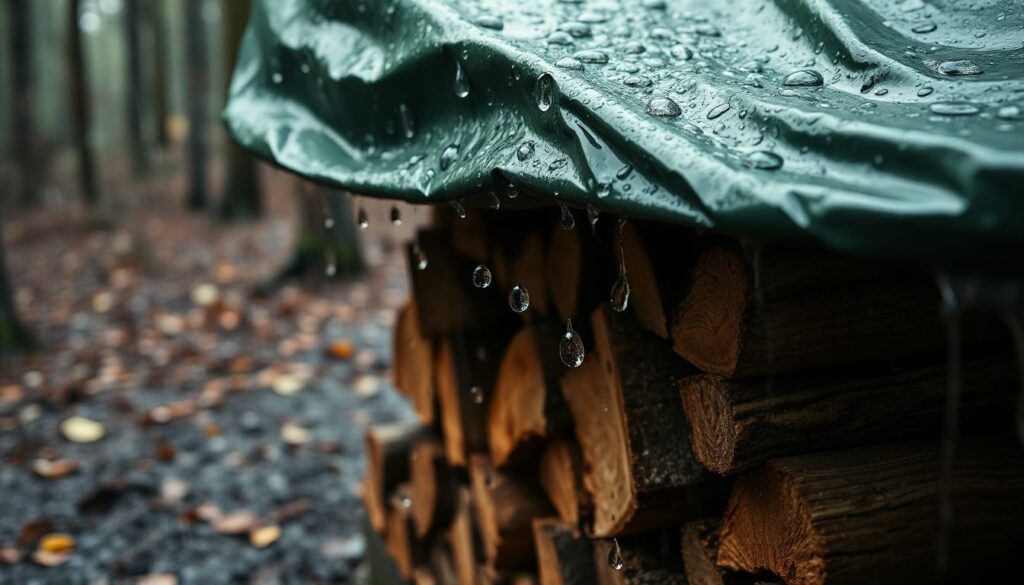The monsoon season offers a welcome break from the extreme heat of the summer, satisfying the earth’s thirst and filling the air with the petrichor of fresh rain. For homeowners, though, it also entails the ongoing concern of water seeping, leaks, and possible damage to their homes. The simple tarpaulin is among the most dependable and adaptable weapon for fighting these challenges of the wet season. A good Tarpaulin Sheet can determine whether a home is dry and safe or unpleasant and wet. Everything you have to know to pick the finest protection for your requirements will be covered in this manual.
Understanding Your Needs: What Are You Protecting?
Before you consider several sorts of tarpaulins, first evaluate what you wish to safeguard. The specifications for covering a pile of firewood are quite different from those for fixing a leaking roof. Seeking to cover a car left out in the open? Maybe you have to build a temporary shelter for animals or protect construction materials on a site. Large-scale, important protection, such as that of a damaged roof, calls for the strongest option now on hand: a real Heavy Duty Tarpaulin. Less important, lesser tasks would probably be fine with a regular poly tarpaulin. Understanding the extent of your work will help you decide on size, material, and strength.
Material Matters: Selecting the Best Fabric
Different materials are used to make tarpaulins, each with its own advantages and disadvantages, particularly in response to strong rain. Polyethylene or poly tarpaulin are the most often seen varieties. Usually quite inexpensive, these are lightweight and waterproof. For brief uses such as covering garden pile or shielding furniture during a relocation, they are ideal. For monsoon-level rain, though, you should look for fortified polyethylene tarps. Usually constructed with a crosshatch pattern and then laminated with polyethylene, these are more resistant to water penetration and tearing.
A Heavy Duty Tarpaulin composed of vinyl or canvas is the best option for maximum defense against unrelenting rain. Extremely robust, totally waterproof, and quite resistant to abrasion, mold, and rot are vinyl tarps. Though they are excellent for long-term outdoor use during a hard monsoon, they are frequently employed in manufacturing contexts. Though not entirely waterproof unless treated, canvas tarps are extremely breathable and water-resistant. Perfect for covering items that require airflow, such as some kinds of machinery or wooden equipment, this breathability keeps moisture from accumulating underneath.
Important Characteristics in a Monsoon Tarpaulin to Search For
You have to be a detail-focused shopper when looking for a tarpaulin sheet meant to survive a lot of rain. First look at the GSM, which is short for Grams per Square Meter. This gauzes the density of the substance. Put plain, a bigger GSM denotes a thicker, heavier, more sturdy tarp. To make sure it can withstand the force of wind-driven rain during monsoon use, choose a tarpaulin with a GSM of 200 or more.
After that, check the reinforcements. To stop water from leaking through the seams, the tarp’s edges should either be heat-sealed or double-stitched. The grommets, which are the metal loops meant to secure the tarp along its edges, are the most important. These ought to be reinforced with additional layers of fabric or metal washers and constructed of rust-resistant metal, such as brass or galvanized steel. If a grommet comes out during a storm, the tarp is totally worthless. Good Heavy Duty Tarpaulins always include grommets that are strong, well-spaced, and firmly connected.
Securing Your Shelter: It’s Not Just About the Cover
Acquiring the finest tarpaulin sheet is just half the struggle; correctly fastening it is the other absolutely critical half. A poorly fastened tarp will flutter violently in the wind, which will put strain on the fabric and grommets and may eventually lead to tear or looseness. Always utilize sturdy ropes or bungee cords that resist the environment. Instead of linking ropes straight to delicate items, secure them to solid, unmovable locations.
Make sure your setup lets water run off when you’re sloping a roof or covering it. Water will collect in a flat, sagging tarp, which can put a lot of weight and stress on it until it finally breaks. Always design a sharp angle so that rainwater may readily run off. For priceless objects, think about making a frame underneath to keep the tarp from touching the surface directly and perhaps transmitting moisture.
Investing for Mental Comfort
Buying the least expensive tarpaulin sheet could seem like a good idea, but the monsoon season is not the time to skimp. An investment is squandered on a flimsy tarp torn after one use. Although a dependable Heavy Duty Tarpaulin could initially cost more, over the long run it is an investment that will safeguard your far more priceless possessions: your home, your for seasons to come your belongings and vehicle. Knowing your safety is guaranteed gives you peace of mind and lets you sleep peacefully even during the worst rainstorms.
Caring for Your Tarpaulin After the Rain
Reusable property is a decent tarpaulin. Good attention will prolong its life for several years. Take off your tarp and carefully clean it once the sun comes out after the rain has stopped. To get rid of grime, trash, and any mildew that could have started to grow, gently brush with a mild soap solution. Use a hose to rinse it well, then hang it to dry entirely. Never fold and store a wet tarpaulin because doing so would encourage fabric weakening and mold development. Fold it carefully and keep it in a cold, dry location away from direct sunlight once it is bone dry, as direct sunlight can over time degrade the fabric. This little upkeep regimen guarantees your dependable protector is ready to go once the following monsoon cloud shows up on the horizon. Read More Articles

